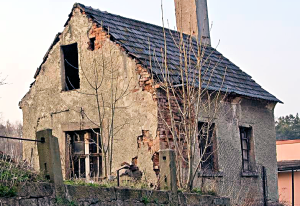More and more house sellers are including a so-called ‘age clause’ in their purchase contract. By doing this, the seller avoids being liable for hidden defects of the home that have arisen due to the age of the home. However, it may also be the case that defects that have a cause other than age are for the account of the buyer thanks to the age clause. Buyers should therefore be extra vigilant if they enter into a purchase agreement with an age clause.
The age clause
In the case of older houses, it is not always easy to detect possible defects (without spending too much money). Therefore, instead of having a thorough investigation and, if necessary, repairs carried out, an age clause offers a solution for a seller if he decides to sell his house. An age clause limits the seller’s liability in the event of (hidden) defects occurring after the sale. For the sake of clarity, this only concerns defects that were not known to the seller at the time of the sale. If a seller does not include an age clause in the sales contract, he is obliged by law to deliver a house that is suitable for normal use. In short, if serious defects occur after the sale in the form ofa rotten foundation or serious leaks, for example, the seller may be faced with a substantial claim for damages.
Risks for the buyer sometimes greater than expected
In view of the above, the advantages of an age clause for the seller are clear, but are the risks for the buyer always clear? In practice, this often turns out not to be the case. Yes, buyers are usually aware of the fact that an older house comes with more defects and therefore run a greater risk if they have signed a sales contract with an age clause. However, what many buyers are not aware of is that defects that are not a direct consequence of age can also be at their expense on the basis of the age clause.
A practical example
As an example, we look at the following age clause from a case before the Court of Appeal of Den Bosch (see also Court of North Holland):
“The buyer declares to be familiar with the fact that the object sold is more than 70 years old, which means that the requirements that may be set for the building quality are considerably lower than for new houses. Unless the seller has guaranteed the quality, he is not responsible for the foundations, floors, pipes, electricity, water and gas and sewerage (…). Architectural quality defects shall be deemed not to hamper the residential use described in (…) the deed of purchase’.
In the judge’s opinion, it did not appear explicitly from the above text that it only relates to defects that are a consequence of the age of the house. In other words, even if, for example, the foundation is considerably less old than the dwelling itself, a defect thereof still falls within the scope of this ‘age clause’ and the buyer himself bears the costs. The fact that it is called an ‘age clause’ (which the buyer thought would only cover the old parts of the house) does not make this any different. The court also considered it important that the parties did not negotiate any further about the clause, so that in this case the text of the age clause was looked at purely as mentioned above.
Prevention is (more concrete) negotiation
In short, what can a buyer do to avoid paying for more recent defects? In any case, it is important as a buyer to make it explicitly clear during the negotiations for which defects he is prepared to bear the risk. It is best, therefore, to state this as specifically as possible in the sales contract in order to avoid any doubt. In addition, but this is more general advice, it is certainly wise in the case of an older home to have a structural inspection carried out to prevent you from being faced with unpleasant surprises. If these surprises do occur, make sure that the liability is clearly stated in the purchase contract.
If you need help in drawing up an age clause or if you would like to have one assessed, please do not hesitate to contact M2 Advocaten.
Lawyer Ginio Beij (beij@m2advocaten.nl)

